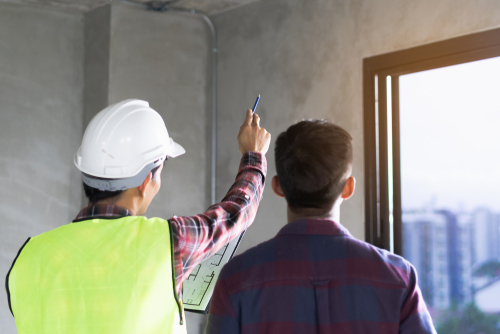In Sydney, when homeowners prepare to sell their property, they often prioritize cosmetic upgrades and staging to appeal to prospective buyers. Yet, the significance of a pre-listing inspection should be more frequently considered. This inspection entails engaging a qualified building inspector to meticulously evaluate the property’s condition before listing it for sale.
Pre-listing inspection
Before listing your home for sale, consider a pre-listing inspection, a thorough assessment of your property’s condition conducted by a qualified building inspector. This inspection entails a detailed examination of all accessible areas, encompassing the foundation, roof, electrical and plumbing systems, HVAC units, and structural elements. Its primary goal is to uncover any possible issues or defects that may affect the sale process or raise red flags for potential buyers.
Identifying and addressing issues before listing
The pre-listing inspection is the opportunity to identify and address any problems with your property before it hits the market. By being proactive and fixing issues in advance, you can avoid potential deal-breakers that could arise during the buyer’s inspection. Some common issues that a pre-listing inspection may uncover include:
- Roof damage or leaks
- Electrical or plumbing problems
- Foundation cracks or settling
- Pest infestations
- Building code violations
Addressing these issues before listing your property can help you avoid costly repairs or price reductions later in selling. Demonstrating that you’ve taken steps to maintain and improve your property will instil confidence in potential buyers and show that your home is a well-cared-for investment.
Pricing your property accurately
With a clear understanding of your home’s condition, you can work with your real estate agent to set a realistic and competitive price. This knowledge helps you avoid overpricing your property, leading to a longer time on the market and a lower sale price. If your vital building inspection reveals that your property is in excellent condition, you justify a higher asking price. By providing potential buyers with a detailed report of your home’s condition, you demonstrate the value of your property and support your asking price with tangible evidence.
Enhancing transparency and building trust
Conducting a pre-listing inspection and sharing the results with potential buyers can enhance transparency and build trust throughout the selling process. By disclosing any known issues upfront, you’ll show that you have nothing to hide and are committed to providing buyers with a clear picture of your property’s condition. This transparency fosters a sense of goodwill and trust between you and potential buyers, making them more likely to submit an offer. In addition, providing buyers with a pre-listing inspection report can help to streamline the selling process. Buyers with access to this information may feel more confident in making an offer, knowing they have a comprehensive understanding of the property’s condition. This can lead to a smoother transaction and reduce the likelihood of last-minute surprises or renegotiations.
Reducing the risk of renegotiations
If the buyer’s inspector uncovers previously unknown issues with the property, the buyer may request repairs, a price reduction, or even walk away from the deal entirely. This is a frustrating and costly experience for sellers who may have already invested time and money into the selling process. By conducting a pre-listing inspection, you can significantly reduce the risk of renegotiations. With a clear understanding of your property’s condition, you can address any issues before listing or disclosing them to potential buyers. This proactive approach helps minimize surprises during the buyer’s inspection and reduces the likelihood of renegotiations or a collapsed sale.

